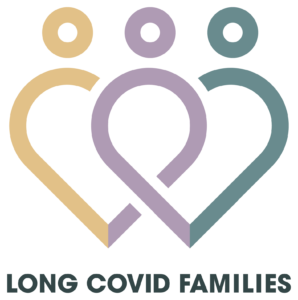You know what it feels like to finally get a diagnosis that explains almost everything.
Your child’s heart races when they stand. They get dizzy. The cardiologist calls it POTS and gives you a plan. You add more salt, you buy the compression socks, you follow the advice.
But something still isn’t right.
They throw up without warning. They forget how to do things they used to know. They can’t smell their favorite foods. Their energy crashes for no reason.
And no one seems to be looking at the full picture.
When the Puzzle Doesn't Fit
Parents describe the same thing again and again. The POTS diagnosis fits until it doesn’t.
Because what’s happening isn’t just orthostatic intolerance. It’s deeper. It’s more complex.
If your child’s symptoms began after COVID, they may be showing signs of Long COVID. POTS might be one part of a much larger process.
For many children, the dizziness and rapid heartbeat are only the beginning. Behind that are new patterns of nausea, cognitive fog, and sensory sensitivity that cannot be explained by POTS alone. It can feel like your child has several different conditions at once, but it’s actually one illness that affects several systems in the body.
What the Research Shows
Researchers at Kennedy Krieger Institute studied 92 children with Long COVID. Seventy-one percent had developed orthostatic intolerance, the category that includes POTS.
This tells us something important. POTS after COVID is not rare. And when it appears after COVID, it often comes with other symptoms like vomiting, brain fog, or changes in smell.
COVID can disrupt the autonomic nervous system, which controls heart rate, blood pressure, digestion, and temperature. When that system is affected, symptoms can appear in several parts of the body at once.
That is why a child can have a rapid heart rate, digestive pain, and cognitive fog all at the same time. It is not a coincidence. It is the same process showing up in different ways. And understanding this connection is what helps families move from managing isolated symptoms to addressing the underlying condition.
Why Naming It Matters
You might wonder if the label really changes anything.
It does.
When you understand that POTS can be part of Long COVID, everything shifts. The vomiting isn’t anxiety. The brain fog isn’t laziness. The exhaustion isn’t poor motivation. These symptoms come from an injury to a system that connects nearly every function in the body.
It means your child isn’t failing treatment. They were never being treated for the whole condition.
Recognizing this connection helps families take a wider view. It helps doctors look beyond the heart rate and consider cognition, digestion, and sensory issues too. It helps schools understand that fatigue and focus problems are part of the same medical picture.
You are no longer treating one symptom. You are treating the whole child.
Getting the Right Diagnosis
Finding care for Long COVID is difficult. Pediatric Long COVID clinics are rare, waitlists are often months long, and many families don’t have one nearby.
Most families will need to work with their existing pediatrician or specialist. Use our guide How to Talk to Your Doctor About Long COVID to help your current providers understand Long COVID.
Ask for a multi-system evaluation. Request assessments for cognitive function, gastrointestinal symptoms, and fatigue alongside the cardiac workup. Understanding the full picture matters, even when treatment options are limited.
Document everything. Keep a detailed record of when symptoms began, what makes them better or worse, and how they affect school and daily life. This becomes critical for school accommodations and disability applications if needed.
We maintain an updated list of pediatric Long COVID clinics for families who have access to one.
.
What Parents Say
“I kept thinking that if we just managed the POTS better, she would get better. But she couldn’t stay awake through class or remember her locker combination. Once we realized it was Long COVID, it all made sense.”
“Our son’s cardiologist was wonderful, but once a Long COVID clinic got involved, they looked at everything — his stamina, his concentration, his sleep. It was the first time someone saw the whole child.”
These stories are not rare. Families across the country are finding that what looks like POTS after COVID is often one expression of post-viral autonomic dysfunction.
The Bigger Picture
For many children, POTS is one piece of a larger post viral condition.
When the symptoms don’t add up, it’s worth asking whether COVID was the trigger. Recognizing that connection doesn’t erase the POTS diagnosis. It completes it.
The truth is, medical science is still catching up. There isn’t a standard treatment protocol for pediatric Long COVID yet. Many families are navigating this with incomplete information and limited specialist availability.
But understanding what you’re dealing with still matters. It helps you advocate more effectively. It helps you make better decisions about pacing, school accommodations, and which symptoms to prioritize. And it connects you to other families who are figuring this out in real time.
You’re not alone in this. And knowing what you’re actually treating, even when treatment options are limited, is better than treating the wrong thing.
Resources for Families
How to Talk to Your Doctor About Long COVID
Appointment prep guide with research summaries and key questions to ask your current providers
Pediatric Long COVID Clinician Directory
Updated list of specialty clinicians accepting pediatric patients, organized by state
What is Long COVID in Children?
Comprehensive overview of symptoms, diagnosis, and what families need to know




